Key takeaways:
- TypeScript enhances code clarity and early error detection with static typing, boosting developer confidence and productivity.
- The transition to TypeScript can be challenging due to its learning curve and mindset change, especially for teams accustomed to JavaScript’s simplicity.
- Effective tooling support and better collaboration are significant benefits of using TypeScript, leading to more productive code reviews and communication among team members.
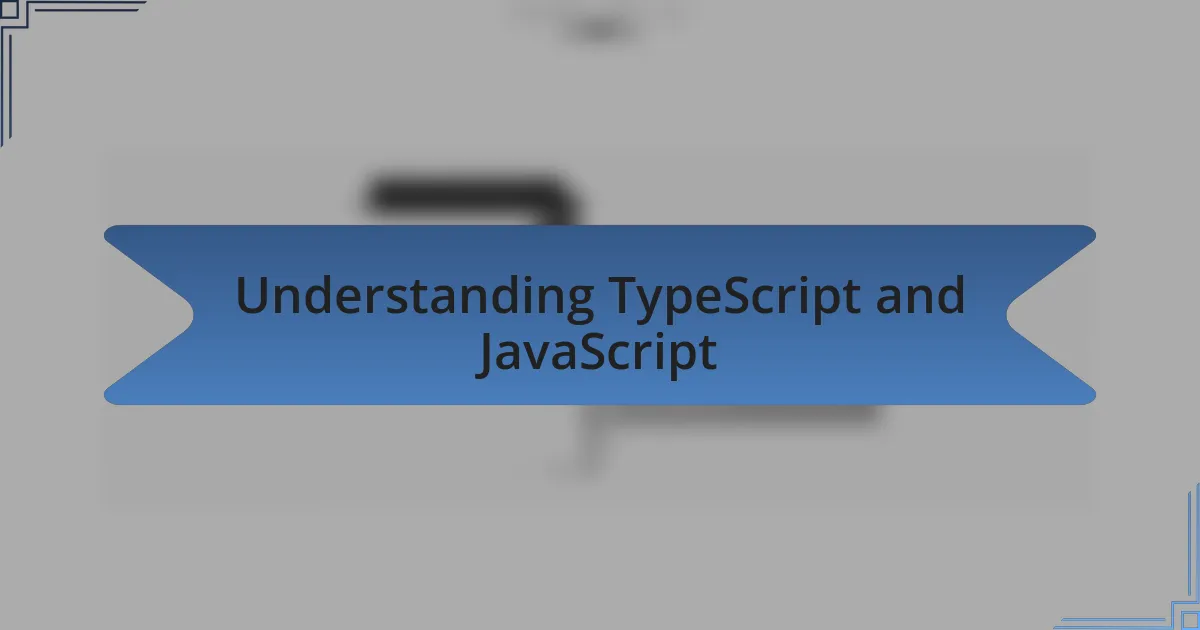
Understanding TypeScript and JavaScript
TypeScript is essentially a superset of JavaScript, which means it builds on JavaScript’s capabilities by adding static types. This feature allows developers like me to catch errors early in the development process, making the experience less frustrating. Have you ever spent hours debugging only to find a tiny typo? TypeScript can really save you from those hair-pulling moments.
While JavaScript is dynamic and flexible, which I appreciate for quick prototyping, it can lead to unexpected outcomes when variables change unexpectedly. I remember a project where a lack of type checks caused a major setback because I mistyped a variable name. Shifting to TypeScript for future projects made my code more predictable, bringing a sense of confidence to the coding process.
In understanding these languages, one might wonder why TypeScript isn’t more widely adopted. For me, it often comes down to the learning curve; many developers are intimidated by new concepts. However, embracing TypeScript has opened doors to better code management and collaboration. When was the last time you felt excited about a tool that made your work easier? I know for me, switching has been a game changer.
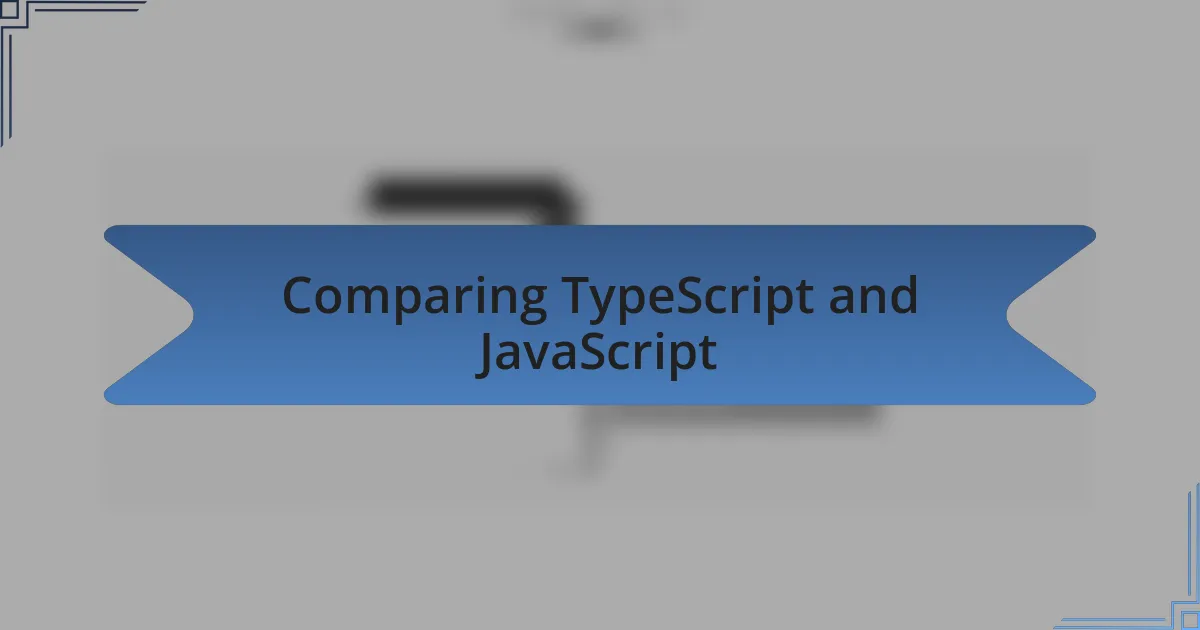
Comparing TypeScript and JavaScript
When I compare TypeScript and JavaScript, I can’t help but notice how TypeScript’s static typing enhances code clarity. I remember a time when I was juggling multiple collaborators on a project using JavaScript, and ambiguity led to confusion. With TypeScript’s clear definitions, I felt a sense of relief knowing that everyone was on the same page, reducing miscommunication.
Another aspect worth considering is tooling and support. Using TypeScript often feels like having a powerful assistant that helps catch potential issues before they become problematic. Have you ever had that moment where a linter flags an error before you even run your code? That immediate feedback while coding is invaluable, and it makes me appreciate the overall efficiency TypeScript brings to the table.
On the other hand, I get that the transition to TypeScript can be daunting for developers who are used to JavaScript’s simplicity. I’ve had friends reluctant to adopt it because they feel overwhelmed by its features. But I often remind them that the initial investment in learning TypeScript pays off—just look at how much easier it becomes to maintain code with fewer runtime errors!
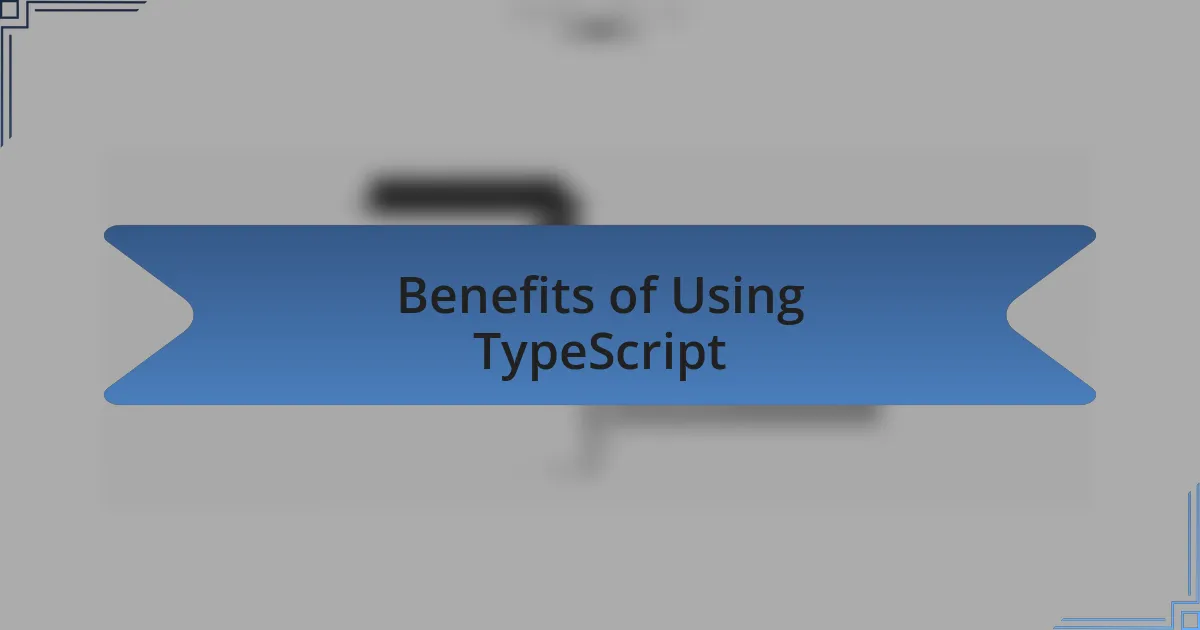
Benefits of Using TypeScript
One of the standout benefits of using TypeScript is its ability to provide early error detection. I recall a project where I painstakingly tracked down a tricky bug that could have been easily caught with TypeScript’s type system. Imagine the time I could have saved if I had just received a nudge about the potential issue right from the start! This early feedback significantly enhances productivity and boosts developer confidence.
Moreover, type safety brings a level of assurance to your code. When I first embraced TypeScript, I experienced what it felt like to have a safety net while coding, especially in larger projects with intricate structures. I remember feeling empowered knowing my codebase was less likely to break unexpectedly. This feeling of security fosters a more conducive environment for innovation, as I am less preoccupied with potential pitfalls.
Finally, the seamless integration with modern frameworks and libraries is a game-changer. I’ve worked on projects where TypeScript effortlessly worked alongside React or Angular, making the development process much smoother. Have you ever felt the frustration of compatibility issues? With TypeScript, that’s one hurdle I no longer have to jump over, allowing me to focus on what really matters: creating amazing software.
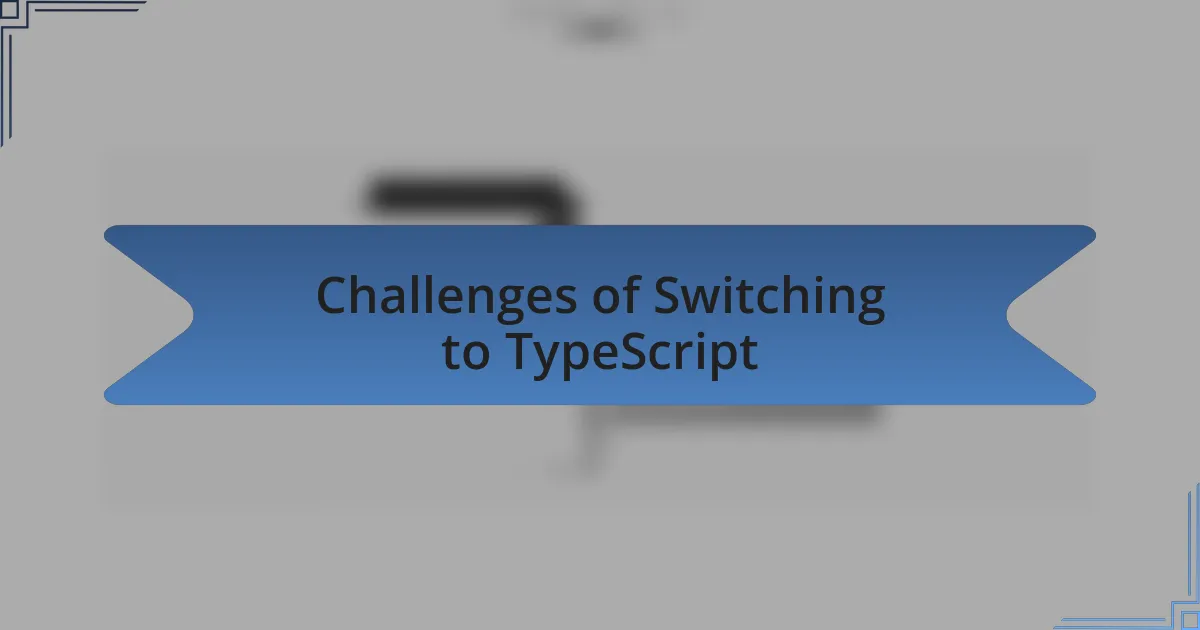
Challenges of Switching to TypeScript
Switching to TypeScript can feel like stepping into a new world, and not always a comfortable one. I remember my initial struggle with understanding the strict type definitions. It was like trying to learn a new language while still getting accustomed to the grammar of my old one. Has that ever happened to you? The learning curve felt steep at times, and I found myself frustrated by the type errors that seemed to pop up everywhere.
Moreover, the adjustment period for my team was challenging as well. We had to change our whole mindset about coding. I vividly recall a day when we had a heated discussion over whether to use any types or stick with stricter definitions. It made me realize that transitioning isn’t just about adopting new tools; it’s about changing the way we collaborate and communicate as developers. Every team member had to adapt, and I could feel some resistance to the change.
There’s also the issue of legacy codebases. I often found myself wishing that the code I was working on had been originally written in TypeScript. Converting JavaScript smoothly to TypeScript can be a tedious and daunting task, not to mention the potential introduction of new bugs during the transition. Have you ever faced a similar situation? The complexity of blending the two worlds sometimes left me longing for the straightforwardness of plain JavaScript, even while knowing TypeScript’s benefits were worth the effort.
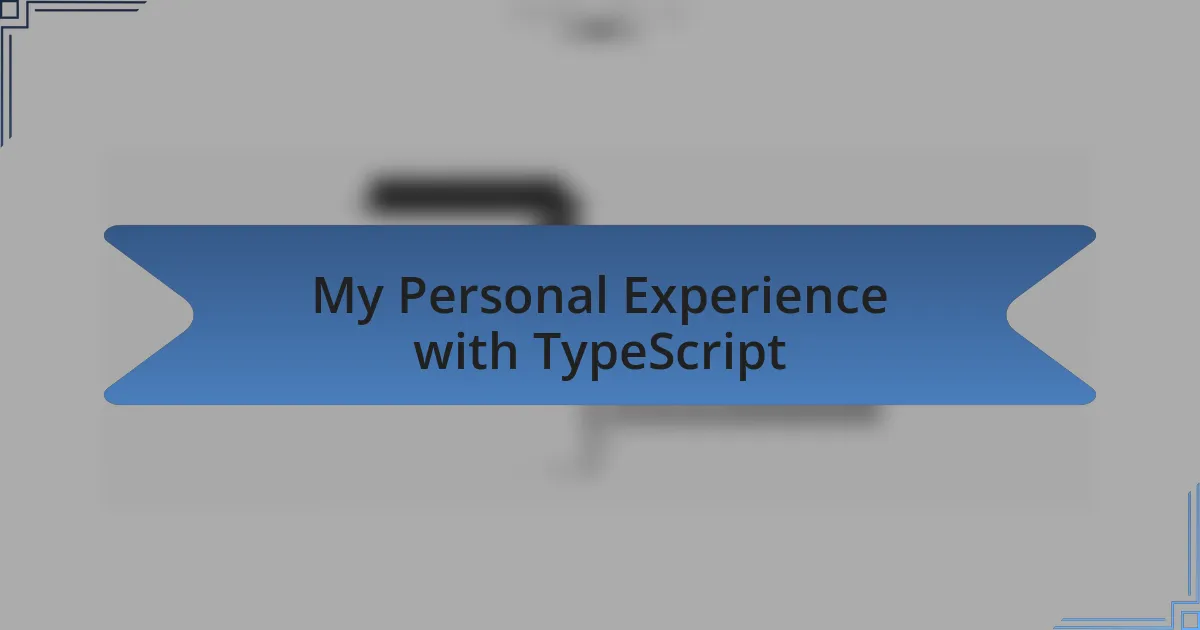
My Personal Experience with TypeScript
I first dipped my toes into TypeScript during a particularly ambitious project at work. The initial thrill of leveraging type safety was both exciting and a bit overwhelming. I still remember the moment I caught a potential bug that would have slipped through unnoticed in JavaScript. It felt like having a safety net—suddenly, I was more confident in my code. Have you ever experienced that rush of clarity when everything aligns?
As I continued to work with TypeScript, I developed a newfound appreciation for its capabilities. One memorable afternoon, after implementing interfaces for complex data structures, I noticed a significant drop in the bugs we encountered during testing. That moment was enlightening; the structure TypeScript provided made discussions with my teammates more productive, as we could pinpoint issues based on types rather than vague references. It was incredible how much the code clarity improved the way we communicated.
However, not every experience was a walk in the park. There were days when I felt buried under the weight of excessive type annotations, longing for the simplicity of JavaScript’s dynamic nature. I distinctly remember a late-night coding session when I spent hours figuring out how to properly declare types for an external library. Those moments tested my patience, yet I came to appreciate the balance between flexibility and rigor that TypeScript offered. Have you ever felt both challenged and rewarded by a tool you initially found overwhelming?

Why I Prefer TypeScript
When I compare TypeScript to JavaScript, one of the standout benefits is the type system. Being able to define types has saved me countless hours debugging. I vividly recall a project where using enums and union types helped me navigate a particularly tricky business logic. With clear type definitions, I could instantly see where values could diverge, effectively eliminating what could have been hours of head-scratching.
Another reason TypeScript has my preference is its tooling support, especially in IDEs like Visual Studio Code. The autocomplete features and inline documentation really elevate my coding experience. I remember when I was working on a large-scale application. The suggestions and error-checking TypeScript provided helped me feel more like a partner than a solo coder. Have you ever wished for a smart assistant that can predict your next move? TypeScript often feels like that trusted co-pilot guiding me through complex code.
Lastly, TypeScript fosters better collaboration among team members. With a shared understanding of types, it streamlines our code reviews. I’ve noticed how my conversations with colleagues shift from questioning intent to discussing functionality. That shift has truly transformed our workflow. Don’t you think it’s refreshing when communication becomes so straightforward that everyone feels on the same page?

Tips for Transitioning to TypeScript
Transitioning to TypeScript can seem daunting at first, but I’ve found that taking a gradual approach makes all the difference. Start by renaming your .js files to .ts and slowly add type annotations to your existing code. This method allowed me to adapt without overwhelming myself. I remember feeling a palpable sense of achievement each time I added a type, as if unlocking a new layer of clarity in my code.
One pivotal tip is to embrace TypeScript’s strict mode. Enabling this feature pushed me to confront potential issues head-on and significantly improved my code quality. It was challenging initially, but when I resolved type errors, I felt a sense of relief, knowing I was writing more reliable code. Have you ever experienced that moment of clarity when the code finally compiles without errors? It’s incredibly satisfying.
Finally, don’t shy away from the community resources available for TypeScript. Engaging in forums or exploring the extensive documentation gave me insights that my everyday practice couldn’t. I remember coming across a particularly enlightening blog post that broke down advanced types in such a way that it suddenly clicked for me. How much could you learn from simply asking a question or reading someone else’s solution? The TypeScript community is welcoming, and tapping into that resource can accelerate your learning significantly.